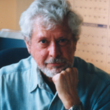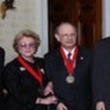Secret subway: the fascinating tale of an amazing feat of engineering
Description
More Details
9781426304620
Also in this Series
Published Reviews
Booklist Review
In the late 1860s, a brilliant engineer, Alfred Beach, tried to solve New York City's traffic-congestion problem by building a tunnel under the busiest streets, beneath some of the world's tallest buildings. He planned to run a subway system powered by blasting air. But he had to build it in secret to outwit the corrupt city boss, William Tweed. Readers, especially the tech-minded, will be held as much by the gripping, personal story as by the engineering details of Beach's plan, and also how the subway works today. Beach and his team worked at night, more than twenty feet underground, with dim lighting and in claustrophobic conditions, storing the dirt in a basement, carting it away in the dark--until, of course, the project was discovered and halted. Beach died long before New York City's subway was finally completed, in 1904. With period etchings and photos on every spread, this title evokes a strong sense of the power politics and the amazing efforts underground. Detailed source notes and a bibliography conclude.--Rochman, Hazel Copyright 2009 Booklist
Horn Book Review
In 1869, New Yorker Alfred Ely Beach, visionary engineer and inventor, began digging a tunnel for a pneumatic subway under Broadway. Beach knew that politics and public skepticism could stop his project, so all the work--digging, removing earth, installing equipment--was kept secret (his full subway was never built). This fascinating book, enhanced with archival drawings, details the remarkable, largely unknown story. Reading list, websites. Ind. (c) Copyright 2010. The Horn Book, Inc., a wholly owned subsidiary of Media Source, Inc. No redistribution permitted. All rights reserved.
Kirkus Book Review
In a grand tale of 19th-century American enterprise, Sandler pays tribute to Alfred Ely Beach, a publisher and inventor who built New York City's first subway. The author opens with a positively scary picture of what the city's streets were like at midcenturyswarming with recent immigrants, clogged with carriages and commercial wagons and made deadly by hundreds of horse-drawn "omnibuses." Not only did Beach come up with a plan to ease the congestion by building an innovative, air-powered subway, he finessed public opinion, the state government and even the all-powerful Boss Tweed by building the first stretch of tunnel in secret, at night. Having solved massive technical problems as he went, he opened it in 1870 to massive acclaimand then, just as he was about to undertake a huge expansion of the system, he fell afoul of 1873's devastating economic collapse. Thoroughly illustrated with period images, this is actually a multistranded tale in which Beach, Boss Tweed and New York itself play roughly equal roles; readers will come away admiring the uncommon ambition of all three. (maps, reading list) (Nonfiction. 11-13) Copyright Kirkus Reviews, used with permission.
Booklist Reviews
In the late 1860s, a brilliant engineer, Alfred Beach, tried to solve New York City's traffic-congestion problem by building a tunnel under the busiest streets, beneath some of the world's tallest buildings. He planned to run a subway system powered by blasting air. But he had to build it in secret to outwit the corrupt city boss, William Tweed. Readers, especially the tech-minded, will be held as much by the gripping, personal story as by the engineering details of Beach's plan, and also how the subway works today. Beach and his team worked at night, more than twenty feet underground, with dim lighting and in claustrophobic conditions, storing the dirt in a basement, carting it away in the dark––until, of course, the project was discovered and halted. Beach died long before New York City's subway was finally completed, in 1904. With period etchings and photos on every spread, this title evokes a strong sense of the power politics and the amazing efforts underground. Detailed source notes and a bibliography conclude. Copyright 2009 Booklist Reviews.
































